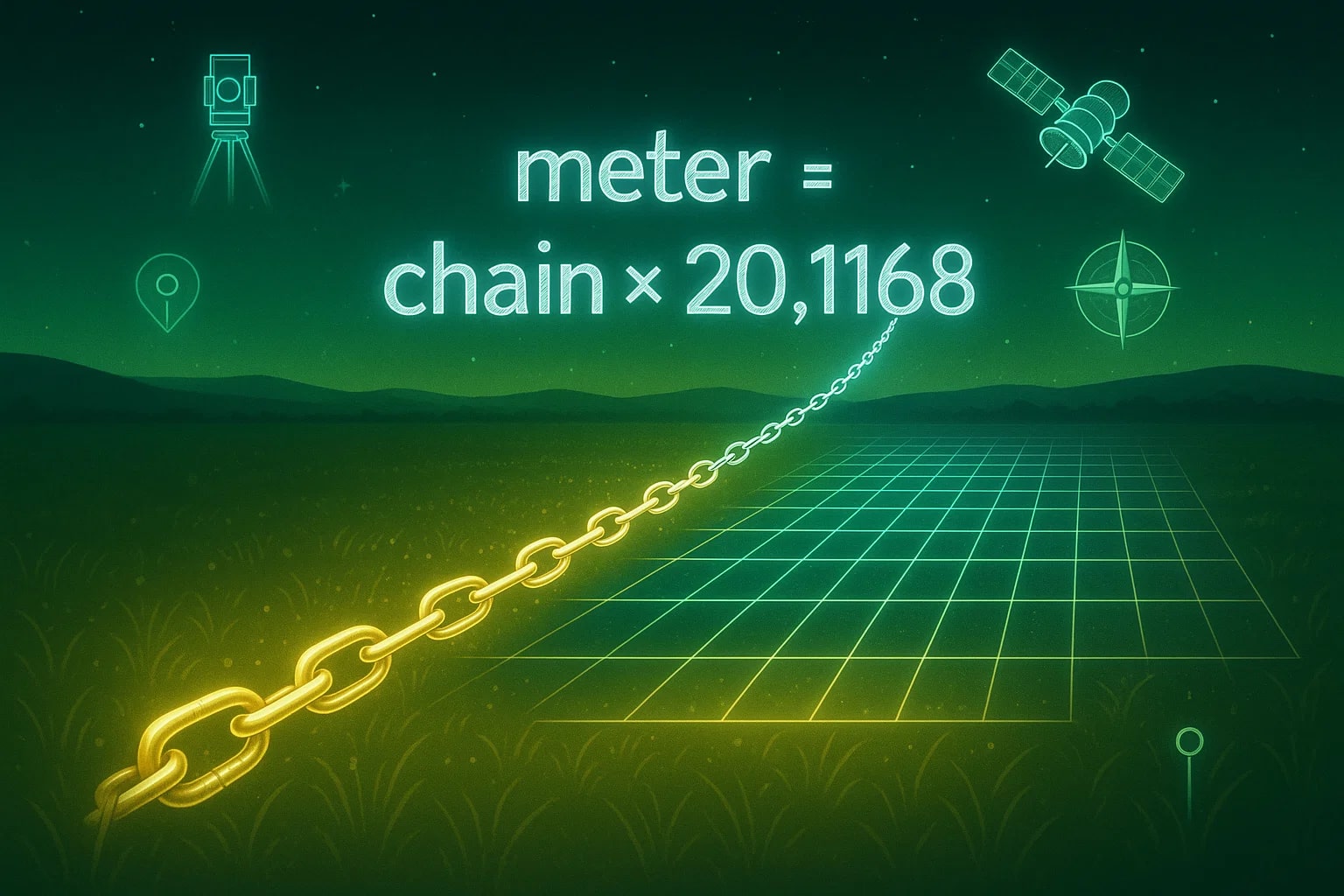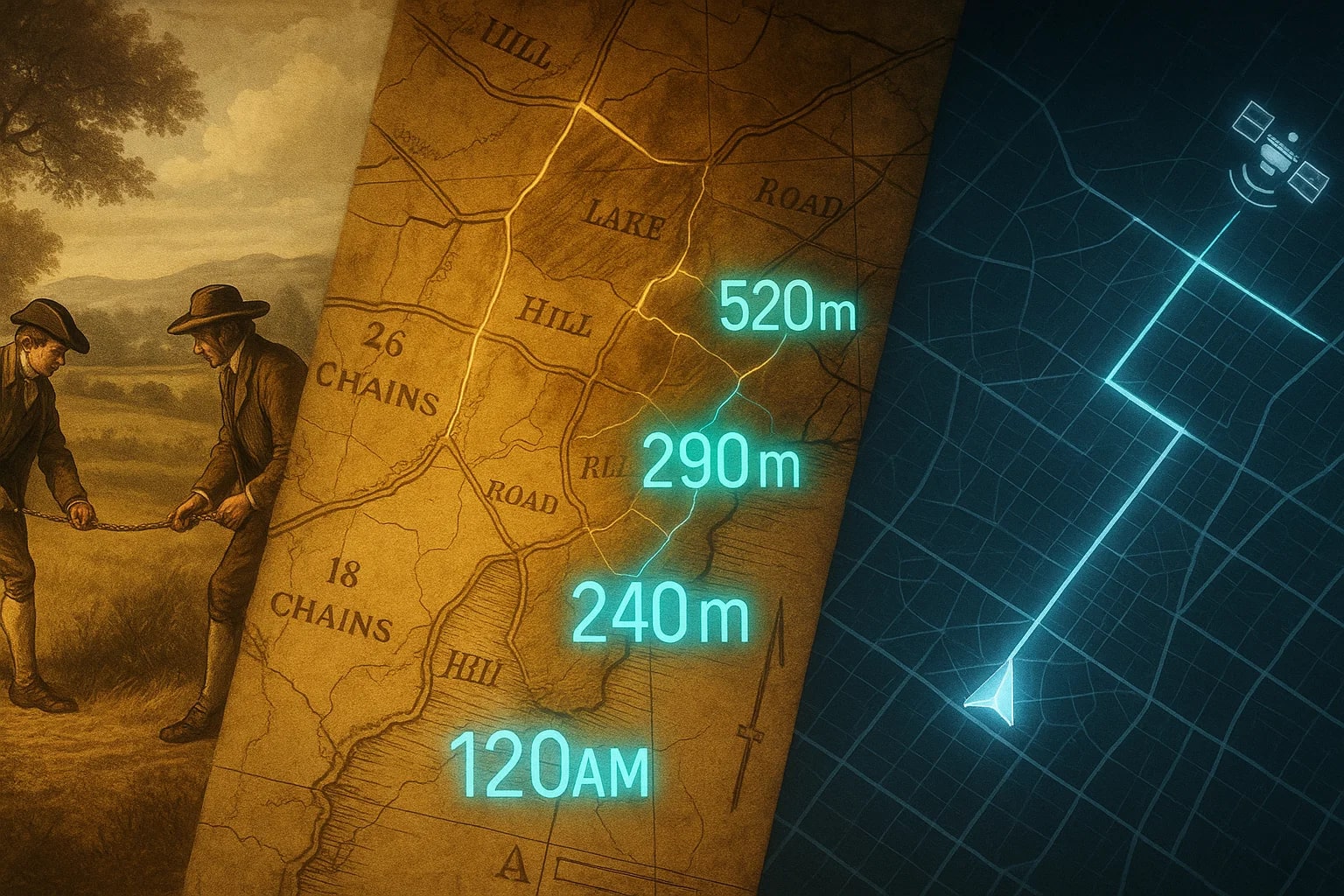chain to meter – How to convert ch to m
Converting from chain to meter allows you to translate traditional surveying units into the modern metric system. Chains were once essential for measuring farmland and mapping territories, while meters are now the global standard. Learning how to convert ch to m helps you bridge historical documents with today’s calculations.

What is a Chain (ch)?
A chain is a unit of length equal to 66 feet or 22 yards. It was standardized by Edmund Gunter in the 17th century and became widely used in English-speaking countries for surveying. One chain is divided into 100 links, making it practical for precise land measurement.
What is a Meter (m)?
The meter is the SI base unit of length. Originally tied to Earth’s meridian, it is now defined by the speed of light in a vacuum. Meters are used worldwide in science, engineering, and daily life as the universal standard of measurement.
How to Convert ch to m
The formula is:
meter = chain × 20.1168
For example, let’s convert 5 ch into meters:
meter = 5 × 20.1168 = 100.584 m
So, 5 ch ≈ 100.58 m.
For exploring other conversions, check the Length Converter or see the full Conversion Tools for a wider set of units.
Do you know?
-
Gunter’s chain was first introduced in 1620 and quickly became the surveyor’s standard, especially in England and its colonies.
-
An acre of land was defined as 10 square chains, embedding the unit into property and agricultural records.
-
The meter, created in 1793, was meant to unify measurements across France during the Revolution, symbolizing rational science over local traditions.
-
Even into the 20th century, British railway distances were recorded in chains, requiring later conversions into meters for modernization.
From Colonial Surveys to Modern Maps
When settlers in North America divided land, surveyors stretched Gunter’s chain across vast fields, recording results in chains and links. These records shaped property boundaries that survive today.
In the 19th century, as nations adopted the metric system, surveyors began converting these chain-based measurements into meters for consistency. Historical maps often contain chain markings, which researchers now translate into meters for compatibility with modern mapping software and GPS.
For instance, a legal land description written as “20 chains” translates directly to about 402 meters. Without such conversions, modern land management systems would struggle to integrate centuries of data.

Measuring Continuity Across Centuries
The conversion from chain to meter symbolizes the evolution of measurement from local tradition to global standardization. Chains preserve a link to surveying history, while meters ensure clarity in today’s international context.
By applying this simple formula, you can read historical survey records and adapt them seamlessly into modern practice. It’s one way math keeps our past connected to our present.

